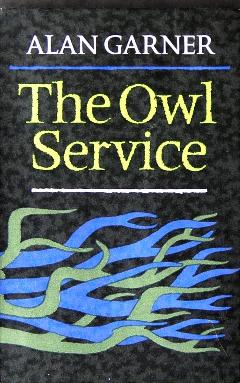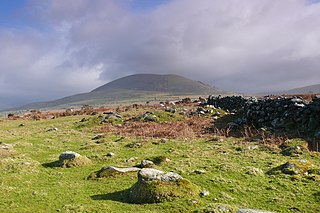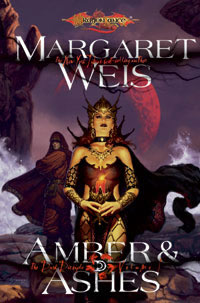Sources
- Ifans, Dafydd; Ifans, Rhiannon, eds. (1980). Y Mabinogion. Gomer Press. ISBN 1-85902-260-X.
A tynged ("destiny, fate", plural tynghedau) is the Welsh equivalent of the Irish geas , similar to being under a vow, curse or spell. The most famous example is that placed by Arianrhod on her son Lleu Llaw Gyffes in the fourth of the Four Branches of the Mabinogi, the Mabinogi of Math fab Mathonwy, in which his mother doomed him to never have a human wife.
In addition, Lleu was destined to die neither "during the day or night, nor indoors or outdoors, neither riding nor walking, not clothed and not naked, nor by any weapon lawfully made." When his magically created wife, Blodeuwedd, wanted to learn how to kill him in order to be with her lover, she convinced him to show her how he could theoretically be killed at dusk while stepping out of a river onto a riverbank while sheltered by a roof and putting one foot on a goat, and so on.
Manawydan fab Llŷr is a figure of Welsh mythology, the son of Llŷr and the brother of Brân the Blessed and Brânwen. The first element in his name is cognate with the stem of the name of the Irish sea god Manannán mac Lir, and likely originated from the same Celtic deity as Manannán. Unlike Manannán, however, no surviving material connects him with the sea in any way except for his patronymic. Manawydan's most important appearances occur in the Second and Third Branches of the Mabinogi, but he is also referenced frequently in medieval poetry and the Welsh Triads.

Gwydion fab Dôn is a magician, hero and trickster of Welsh mythology, appearing most prominently in the Fourth Branch of the Mabinogi, which focuses largely on his relationship with his young nephew, Lleu Llaw Gyffes. He also appears prominently in the Welsh Triads, the Book of Taliesin and the Stanzas of the Graves.
In Welsh mythology, Math fab Mathonwy, also called Math ap Mathonwy was a king of Gwynedd who needed to rest his feet in the lap of a virgin unless he was at war, or he would die. The story of Math is the fourth of the Four Branches of the Mabinogi.
Lleu Llaw Gyffes is a hero of Welsh mythology. He appears most prominently in the Fourth Branch of the Mabinogi, the tale of Math fab Mathonwy, which tells the tale of his birth, his marriage, his death, his resurrection and his accession to the throne of Gwynedd. He is a warrior and magician, invariably associated with his uncle Gwydion.

Blodeuwedd, is the wife of Lleu Llaw Gyffes in Welsh mythology. She was made from the flowers of broom, meadowsweet and oak by the magicians Math and Gwydion, and is a central figure in Math fab Mathonwy, the last of the Four Branches of the Mabinogi.
Gronw Pebr "Gronw the Radiant" is a warrior, hunter and antagonist in Welsh tradition, appearing primarily in the fourth branch of the Mabinogi as the lord of Penllyn, the lover of Blodeuwedd and the murderer of Lleu Llaw Gyffes. He is also mentioned in the Welsh Triads and in the medieval poem Cad Goddeu.
In Welsh mythology, Arawn was the king of the otherworld realm of Annwn who appears prominently in the first branch of the Mabinogi, and alluded to in the fourth. In later tradition, the role of the king of Annwn was largely attributed to the Welsh psychopomp, Gwyn ap Nudd - meaning "white" a possible kenning for his true name. However, Arawn's memory is retained in a traditional saying found in an old Cardigan folktale:

Brân the Blessed is a giant and king of Britain in Welsh mythology. He appears in several of the Welsh Triads, but his most significant role is in the Second Branch of the Mabinogi, Branwen ferch Llŷr. He is a son of Llŷr and Penarddun, and the brother of Brânwen, Manawydan, Nisien and Efnysien. The name "Brân" in Welsh is usually translated as crow or raven.
Dylan ail Don is a character in the Welsh mythic Mabinogion tales, particularly in the fourth tale, "Math fab Mathonwy". The story of Dylan reflects ancient Celtic myths that were handed down orally for some generations before being written down during the early Christian period by clerics. The story as it has been preserved therefore exhibits elements and archetypes characteristic of both Celtic pagan and Christian mythologies. His name translates as "Dylan the Second Wave."
A geis or geas is an idiosyncratic taboo, whether of obligation or prohibition, similar to being under a vow or curse, yet the observance of which can also bring power and blessings. It is also used to mean specifically a spell prohibiting some action. Geasa are common in Irish and Scottish folklore and mythology, as well as in modern English-language fantasy fiction.

The Owl Service is a low fantasy novel for young adults by Alan Garner, published by Collins in 1967. Set in modern Wales, it is an adaptation of the story of the mythical Welsh woman Blodeuwedd, an "expression of the myth" in the author's words.

King Lot, also spelled Loth or Lott, is a British monarch in Arthurian legend. He was introduced in Geoffrey of Monmouth's pseudohistorical Historia Regum Britanniae as King Arthur's brother-in-law, who serves as regent of Britain between the reigns of Uther Pendragon and Arthur. He has appeared regularly in works of chivalric romance, alternating between the roles of Arthur's enemy and ally, and is often depicted as the ruler of Lothian and either Norway or Orkney. His literary character is probably derived from hagiographical material concerning Saint Kentigern, which features Leudonus as king of Leudonia and father of Saint Teneu.

Ardudwy is an area of Gwynedd in north-west Wales, lying between Tremadog Bay and the Rhinogydd. Administratively, under the old Kingdom of Gwynedd, it was first a division of the sub kingdom (cantref) of Dunoding and later a commote in its own right. The fertile swathe of land stretching from Barmouth to Harlech was historically used as pasture. The name exists in the modern community and village of Dyffryn Ardudwy.

Welsh mythology consists of both folk traditions developed in Wales, and traditions developed by the Celtic Britons elsewhere before the end of the first millennium. As in most of the predominantly oral societies Celtic mythology and history were recorded orally by specialists such as druids. This oral record has been lost or altered as a result of outside contact and invasion over the years. Much of this altered mythology and history is preserved in medieval Welsh manuscripts, which include the Red Book of Hergest, the White Book of Rhydderch, the Book of Aneirin and the Book of Taliesin. Other works connected to Welsh mythology include the ninth-century Latin historical compilation Historia Brittonum and Geoffrey of Monmouth's twelfth-century Latin chronicle Historia Regum Britanniae, as well as later folklore, such as the materials collected in The Welsh Fairy Book by William Jenkyn Thomas (1908).
The Four Branches of the Mabinogi or Pedair Cainc Y Mabinogi are the earliest prose stories in the literature of Britain. Originally written in Wales in Middle Welsh, but widely available in translations, the Mabinogi is generally agreed to be a single work in four parts, or "branches." The interrelated tales can be read as mythology, political themes, romances, or magical fantasies. They appeal to a wide range of readers, from young children to the most sophisticated adult. The tales are popular today in book format, as storytelling or theatre performances; they appear in recordings and on film, and continue to inspire many reinterpretations in artwork and modern fiction.

Amber and Ashes is a fiction, fantasy novel in the Dragonlance book series and is the first of a trilogy called "The Dark Disciple", based around the character Mina. The book takes up where the War of Souls left off. This trilogy will explore the Chaos that is post-war Krynn. It is authored by Margaret Weis, who was a co-founder of the Dragonlance series, along with Tracy Hickman. This is Weis's fourteenth novel in the series, and first solo hardcover since the publication of the extremely popular Dragonlance title The Soulforge in 1998.
In Welsh Mythology, Hyddwn appears in the fourth of the Four Branches of the Mabinogi and is one of the three sons of Gwydion and Gilfaethwy. As punishment for the rape of Goewin, Math banished his nephews, turning them into a breeding pair of deer for a year, then pigs, and finally wolves. They had three children over the three years: Hyddwn, Hychddwn, and Bleiddwn. Hyddwn is the offspring of the deer pairing. Math took him and transformed him into a human being, baptising him Hyddwn ("Stag-man").
Llech Ronw, or the Slate of Gronw, is a holed stone located along Afon Bryn Saeth in Blaenau Ffestiniog, Wales. The stone is described as being roughly forty inches by thirty inches with a hole of about an inch in diameter going through it.

Math fab Mathonwy, "Math, the son of Mathonwy" is a legendary tale from medieval Welsh literature and the final of the four branches of the Mabinogi. It tells of a vicious war between the north and the south, of the birth of Lleu Llaw Gyffes and Dylan ail Don, of the tyngedau of Arianrhod, and of the creation of Blodeuwedd, a woman made of flowers. The chief characters of the tale are Math, king of Gwynedd, his nephew Gwydion, a magician, warrior and trickster, and Gwydion's own nephew, Lleu, cursed by his mother Arianrhod.
In Irish mythology, Cian or Cían, nicknamed Scal Balb, was the son of Dian Cecht, the physician of the Tuatha Dé Danann, and best known as the father of Lugh Lamhfada. Cían's brothers were Cu, Cethen, and Miach.